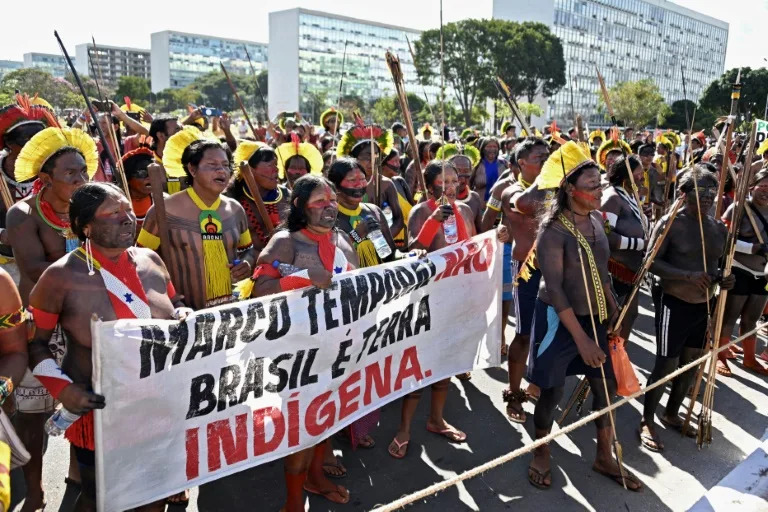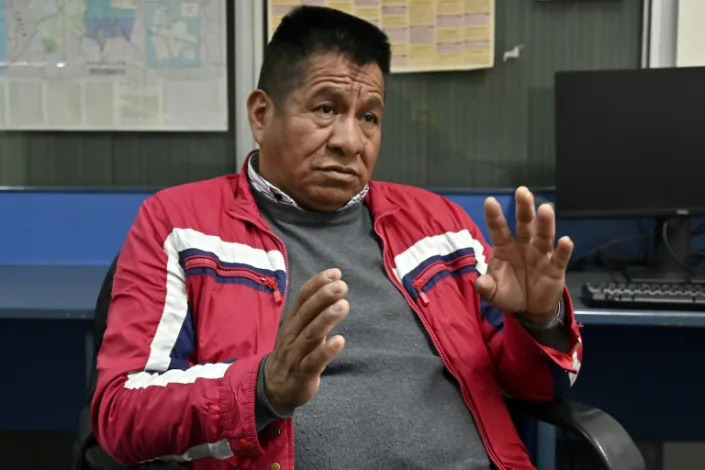Issued on: 08/06/2023 -
Hong Kong (AFP) – Hong Kong's top court agreed on Thursday to hear an appeal from government prosecutors against a prominent activist for her involvement in a banned Tiananmen Square vigil, challenging a lower court ruling in her favour.
Chow Hang-tung was one of the leaders of a group that organised an annual vigil commemorating the bloody Tiananmen Square crackdown in China.
The vigil has been banned since 2020, the year that Beijing imposed a national security law on Hong Kong designed to quell dissent.
She was convicted last year of inciting others to defy the ban in 2021, but won a rare victory in December when the High Court ruled in favour of her appeal, saying that police did not properly follow procedure when banning the vigil.
The Department of Justice renewed its efforts against Chow, asking Hong Kong's top court to clarify whether a person accused of defying a government ban on a public gathering can challenge the legality of that ban in court.
The Court of Final Appeal ruled Thursday that the case raised a legal question of "great and general importance" and scheduled a hearing for November 22.
The decision came days after the 34th anniversary of the 1989 Tiananmen Square crackdown on Sunday.
Chow faces further prosecutions, including charges under the national security law that carry sentences of up to a decade in jail.
She was arrested the morning of June 4, 2021, when her articles published on social media and in a newspaper called on residents to "light candles to seek justice for the dead".
At the time, police said that the vigil was banned due to the Covid-19 pandemic and that thousands of officers would be on standby to halt any "unlawful assemblies".
Hong Kong was once the only Chinese city that could commemorate the incident of June 4, 1989, when the government sent troops to crush demonstrations in Tiananmen Square calling for political change.
While the commemoration is forbidden in mainland China, tens of thousands would gather every year in Hong Kong's Victoria Park to hold a candlelight vigil.
But public mourning for the victims of the Tiananmen crackdown has been driven underground since Hong Kong outlawed the vigil in 2020.
On Sunday, the area around Victoria Park saw heavy police presence, with officers searching people and briefly detaining some who carried flowers or held a candle -- which were taken as signs of mourning.
Chow Hang-tung was one of the leaders of a group that organised an annual vigil commemorating the bloody Tiananmen Square crackdown in China.
The vigil has been banned since 2020, the year that Beijing imposed a national security law on Hong Kong designed to quell dissent.
She was convicted last year of inciting others to defy the ban in 2021, but won a rare victory in December when the High Court ruled in favour of her appeal, saying that police did not properly follow procedure when banning the vigil.
The Department of Justice renewed its efforts against Chow, asking Hong Kong's top court to clarify whether a person accused of defying a government ban on a public gathering can challenge the legality of that ban in court.
The Court of Final Appeal ruled Thursday that the case raised a legal question of "great and general importance" and scheduled a hearing for November 22.
The decision came days after the 34th anniversary of the 1989 Tiananmen Square crackdown on Sunday.
Chow faces further prosecutions, including charges under the national security law that carry sentences of up to a decade in jail.
She was arrested the morning of June 4, 2021, when her articles published on social media and in a newspaper called on residents to "light candles to seek justice for the dead".
At the time, police said that the vigil was banned due to the Covid-19 pandemic and that thousands of officers would be on standby to halt any "unlawful assemblies".
Hong Kong was once the only Chinese city that could commemorate the incident of June 4, 1989, when the government sent troops to crush demonstrations in Tiananmen Square calling for political change.
While the commemoration is forbidden in mainland China, tens of thousands would gather every year in Hong Kong's Victoria Park to hold a candlelight vigil.
But public mourning for the victims of the Tiananmen crackdown has been driven underground since Hong Kong outlawed the vigil in 2020.
On Sunday, the area around Victoria Park saw heavy police presence, with officers searching people and briefly detaining some who carried flowers or held a candle -- which were taken as signs of mourning.







.png)
.png)
.png)


